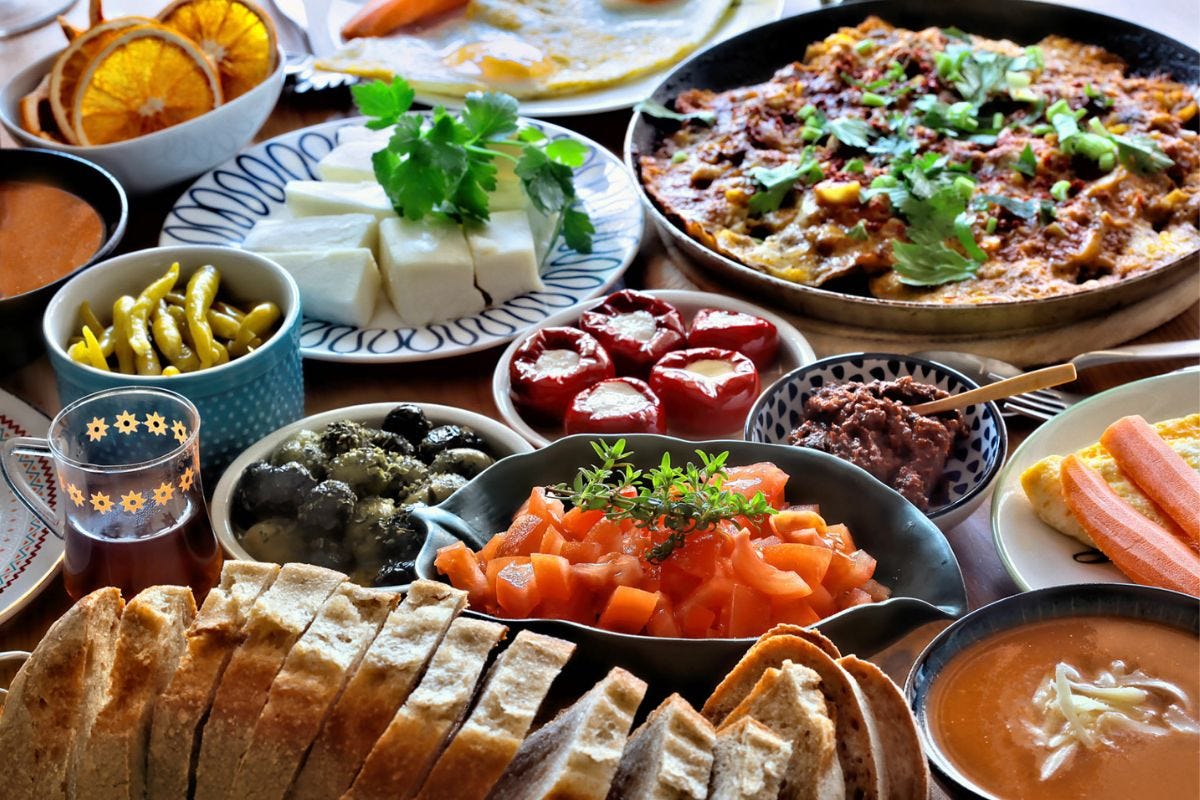
In the energetic universe of Turkish food, Çeciir holds a unique spot as a key fixing that has been woven into the culinary texture of the country for quite a long time. This humble yet flexible vegetable, otherwise called chickpeas, assumes an essential part in Turkish gastronomy, conveying a rich embroidery of flavors and surfaces that has dazzled taste buds both locally and universally.
Çeciir Defined
Çeciir, generally alluded to as chickpeas, is a sort of vegetable having a place with the Fabaceae family. These round, beige-hued seeds are a staple fixing in Turkish cooking, known for their nutty flavor, good surface, and versatility in different dishes.Whether enjoyed as a standalone snack, a key component of traditional stews, or a star player in delectable mezes, Çeciir’s versatility knows no bounds.
The Origins and History of Çeciir
Historical Roots and Cultural Significance
To really see the value in Çeciir’s place in Turkish cooking, one should dive into its verifiable roots and social importance. Chickpeas have been developed in the district for millennia, tracing all the way back to old civilizations like the Hittites and Phrygians. Truth be told, chickpeas play had a critical impact in Anatolian horticulture, making them an image of food and thriving.
The chickpea’s social importance is profoundly settled in the Anatolian lifestyle. Since forever ago, chickpeas were a dietary staple as well as utilized in different ceremonies and customs, connoting their significance to individuals. They represent the association between Anatolia’s rich horticultural legacy and its energetic culinary culture.
Evolution of Çeciir over Time
Throughout the long term, chickpeas have developed from a basic staple into a cherished fixing in Turkish cooking. They have adjusted to the changing culinary scene, bringing about a wide assortment of dishes that grandstand their flexibility. From customary Anatolian stews to contemporary advancements, chickpeas have endured everyday hardship, offering both solace and experience to Turkish food aficionados.
The Spread of Çeciir
Geographic Distribution and Popularity
The popularity of Çeciir extends far beyond Turkey’s borders. Chickpeas are developed in different districts of the nation, including the Focal Anatolian level and the Mediterranean coast, and they are a staple harvest in the Turkish rural scene. Also, Turkey is one of the biggest makers of chickpeas universally, adding to their boundless accessibility.
Past Turkey, chickpeas have advanced toward global business sectors, where they are praised for their taste, flexibility, and dietary benefit. The ubiquity of chickpeas isn’t restricted to Turkish cooking; they have turned into a worldwide fixing, gracing the tables of different societies all over the planet.
Influence on Neighboring Cuisines
Chickpeas have left a significant imprint on the cuisines of neighboring countries. They feature prominently in Middle Eastern and Mediterranean cooking, where dishes like hummus, falafel, and various chickpea-based stews and soups are cherished. The exchange of culinary traditions and ingredients has enriched the culinary tapestry of the region, making chickpeas a unifying force in the Mediterranean and beyond.
Çeciir in Turkish Cuisine
Role and Importance in Turkish Culinary Traditions
In Turkish cuisine, Çeciir is revered for its versatility and its ability to adapt to a wide range of culinary creations. It serves as a vital source of protein in a cuisine where meatless dishes are celebrated just as much as meat-based ones. The chickpea is a star ingredient in a multitude of mezes, soups, stews, and salads, reflecting its importance in everyday Turkish cooking.
Various Uses and Dishes that Feature Çeciir
Chickpeas find their way into numerous dishes, showcasing their adaptability. In traditional Turkish cuisine, some notable dishes include “Mercimek Çorbası”
How Çeciir Is Made
Malting the Grains
The journey of chickpeas from the field to the table begins with cultivation and harvesting. Chickpeas are filled in different districts of Turkey, and their quality is firmly checked to guarantee they satisfy culinary guidelines. After reap, the chickpeas go through an interaction known as malting, where they are painstakingly dried and ready for utilization.
Boiling and Straining
When malted, chickpeas are frequently bubbled until they arrive at the ideal degree of delicacy. This step is basic for some chickpea-based dishes, as it relax the vegetables, making them more straightforward to work with.After boiling, chickpeas are strained and ready to be incorporated into various recipes.
Fermenting and Bottling
In some traditional recipes, chickpeas are fermented to enhance their flavor and nutritional value. These fermented chickpeas are used in the preparation of “Nohut Diblesi” and other dishes. The chickpeas are left to ferment for a specific duration before being bottled for future use, infusing dishes with a distinctive tangy flavor.
Flavor Characteristics
Description of the Unique Flavors and Aromas
Çeciir offers a robust and nutty flavor, which is complemented by its slightly earthy aroma. The flavors and aromas vary depending on how chickpeas are prepared and the accompanying ingredients in a dish. When roasted, chickpeas develop a delightful crunch and a deeper, smoky flavor that enhances their versatility.
Distinctive Taste Profiles
Chickpeas can range from creamy to firm in texture, depending on how they are cooked. In dishes like “Nohut Diblesi,” chickpeas are simmered with bulgur, resulting in a hearty and satisfying meal. In contrast, “Humus” offers a creamy and smooth texture, highlighting the ability of chickpeas to transform into various culinary expressions.
The Unique Flavors and Textures of Çeciir
A Symphony of Contrasts
One of the charms of chickpeas is their ability to create contrasts in a dish. In “Mercimek Çorbası,” the creamy nature of red lentils blends harmoniously with the firm texture of chickpeas, creating a wholesome and comforting soup. This contrast of textures and flavors is a hallmark of Turkish cuisine, showcasing the creative use of chickpeas.
Customization to Suit Individual Tastes
Chickpeas can be customized to suit individual tastes, whether by adjusting the level of spiciness, adding fresh herbs, or incorporating other ingredients like garlic or tahini. This adaptability allows each dish to be a unique reflection of the cook’s culinary preferences, making chickpea-based recipes a canvas for culinary creativity.
Where to Find and Enjoy Çeciir
Bakeries and Patisseries
Chickpea-based snacks are commonly found in bakeries and patisseries throughout Turkey. “Nohutlu Ekmek” or chickpea bread is a popular offering, featuring roasted chickpeas encased in a hearty loaf, making it a satisfying on-the-go snack.
Street Vendors
Street food vendors play a significant role in introducing locals and tourists alike to chickpea-based delights. Roasted chickpeas, served hot and seasoned with spices, are a ubiquitous street food item, offering a quick and flavorful taste of Çeciir.
Festivals and Special Occasions
Throughout Turkey, numerous food festivals and special occasions celebrate the versatility of chickpeas. Festivals like the “Nohut Festival” in Kastamonu showcase various dishes made with chickpeas, allowing visitors to savor the wide range of flavors and preparations.
Homemade Çeciir
Perhaps the most cherished way to enjoy Çeciir is through homemade dishes prepared with love and care. Many Turkish households have their secret recipes for chickpea-based stews, soups, and mezes, making each home-cooked meal a unique experience.
FAQ About Çeciir
What is Çeciir, and how is it pronounced?
Çeciir is the Turkish name for chickpeas, a type of legume. It’s pronounced as “cheh-chee-eer.
Why are chickpeas so significant in Turkish cuisine?
Chickpeas have a long history in the region, are a rich source of protein, and are incredibly versatile. They feature prominently in numerous Turkish dishes, both as a main ingredient and a complementary component.
What are some traditional Turkish dishes that feature Çeciir?
Traditional Turkish dishes like “Mercimek Çorbası” (red lentil soup with chickpeas), “Nohut Diblesi” (a chickpea and bulgur pilaf), and “Humus” are popular examples that incorporate chickpeas.
How do you prepare chickpeas for cooking?
Chickpeas are usually soaked in water, then boiled until they reach the desired level of tenderness. They can also be roasted or fermented for specific dishes.
What kind of flavors and textures can I expect from Çeciir dishes?
Chickpeas offer a nutty and slightly earthy flavor. The textures can vary, from creamy in dishes like hummus to firmer in stews and salads.
Conclusion
Summarize the Key Points
In conclusion,Çeciir, or chickpeas, are a fundamental fixing in Turkish cooking, well established in the nation’s set of experiences and culture. Their flexibility considers the production of a large number of dishes, each offering an extraordinary taste and surface. Whether delighted in as a basic road nibble or as the star fixing in a complex meze, chickpeas keep on enamoring food lovers all over the planet.
The Significance of Çeciir in Turkish Culture and Cuisine
Çeciir’s significance goes beyond the kitchen; it is a symbol of sustenance, tradition, and the rich agricultural heritage of Anatolia. It showcases the adaptability of Turkish cuisine, where ancient ingredients like chickpeas continue to play a vibrant and relevant role in modern culinary expressions. As a staple that connects the past to the present, Çeciir represents the enduring legacy of Turkish culinary traditions.









